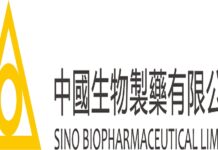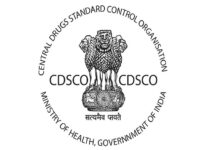The European Parliament recently introduced compromise amendments to the revised EU pharmaceutical legislation introduced in April 2023, and they attempt to address some of the concerns of the pharmaceutical industry and, at the same time, promote innovation by small- and medium-sized enterprises (SMEs). While it is likely more changes will be made before the final revision is adopted, it is well worth discussing its potential impacts on the industry as the legislation advances.
Data exclusivity
The proposed changes to regulatory data protection continues to be a hot button issue. At present, data exclusivity for all medicines is eight years, and the newest proposal decreases that to a period of 7.5 years, plus two years of market protection during which generic or biosimilar products cannot be sold. Incentives to increase the exclusivity period of a product are also proposed, and include addressing unmet medical need, if a significant share of the R&D on the product takes place in the EU, or if comparative trials are conducted.
Overall, the compromise amendments propose an upper cap of 8.5 years of regulatory data protection, which can cut significantly into the benefits of such incentives. In addition, the incentives are not clearly defined yet – thus, it is uncertain how difficult they may be to obtain. It is understandable, given the high cost of developing new treatments, pharmaceutical manufacturers have serious concerns on the variable, complex system proposed thus far.
Impact on SMEs and innovation
Biopharmaceutical SMEs are key drivers of innovation in the EU, and are particularly important to the development of new medicines, notably, in underserved sectors (due to lower market potential) and for conditions such as rare and infectious diseases. The new legislation highlights the importance of these companies and strives to make things easier and less complex for SMEs, who typically have more limited resources than larger firms. This could enable easier market entry into the EU, and is arguably an easier process than obtaining approval through some regulatory agencies. Under the proposed revisions, for example, if a small biotech is working on a high unmet need area, the European Medicines Agency (EMA) has indicated they will provide free advice or discounted fees, and with additional measures proposed, this will provide for more predictability.
This can translate into improved cash runways and fundraising, which helps SMEs increase their enterprise value as they seek to exit, and further, given that much of the pipeline for big pharma comes from SMEs, notwithstanding the concerns above, this can be good news for the overall industry.
Financial implications for SMEs
The EU is a market with 500M+ covered lives and serves as a regulatory reference to other high- and middle-income countries. The principal aim of the new legislation is to make the path to market much more predictable, or de-risked in investment-speak, for SMEs working on high unmet need area. In this scenario, with expanded incentives for SMEs, an SME working on a high unmet need area can work very closely with the EMA to ensure they align on a regulatory pathway to approval. Further, many other incentives make it less costly for an SME to place their medicines into the market by changes in certain fees and requirements in favor of small companies. And while the EU is more restrictive when it comes to pricing, the reforms are leaning in the direction of understanding what is needed for a positive assessment, including simplifying market access across 27 markets (the biggest concern for biotechs) and providing some level of upfront visibility. This reduces the risk of obtaining approval, and then having zero sales after trying all countries for P&R.
A critical component of the revision is that SMEs can freely obtain opinions from the EMA which are legally binding to both EMA and the company. From a funding perspective, this allows SMEs to show prospective investors a scenario that is much more certain. A more certain scenario means lower risk premiums, decreasing the cost of capital. Lower risk also means the potential of attracting a new class of more conservative investors. A final benefit is the amount companies will need to raise from investors will decrease. This allows SMEs to do more with less cash, thus extending their runway.
Orphan drugs
The compromise amendments maintain the 2023 proposal to reduce market exclusivity for orphan medicinal products from approximately 11 years at present to a baseline of nine years. If the product addresses high unmet need, the exclusivity period would be 11 years. Aside from the uncertainties as to whether an orphan treatment would obtain the high unmet need status, protection for new orphan indications would be significantly reduced. Under the compromise amendments, the current system, which allows each new orphan indication its own exclusivity period, would be replaced by a system with a single orphan market exclusivity and allowing a one-year extension for the first two new indications. This may run counter to one of the key goals of the draft legislation, to “reward innovation especially in areas of unmet medical need.” As such, the approach runs the risk of delaying urgently needed treatments from reaching the patients.
Finally, at the end of the day, this approach may not be cost effective for payors, either. Product prices tend to decline over time in the EU, particularly when new indications are added. Now we might see a “one product one indication approach.”
Antimicrobial resistance
An important development in the amended legislation is the introduction of Transferable Exclusivity Vouchers for “priority antimicrobials.” The vouchers offer companies that develop these antimicrobials the possibility of up to 12 months of additional data protection, which can be transferred to another product. The compromise amendments, however, have included a clause that the voucher cannot be used for a product that extends the product’s protection period past the 8.5-year cap.
Although the program has the potential to bring more certainty and some significant rewards, there are many caveats. Ultimately, even if everything works well, vouchers alone won’t make AMR companies reliable, sustainable businesses – the program instead runs the risk of generating prize-seeking entities.
There are two less clearly defined programs in the proposal we are much more cautiously optimistic about. The first is fixed payment schemes. AMR treatments are developed to be used, hopefully, as little as possible – thus breaking the traditional model in pharma. As the value is more analogous to an “insurance” business, this approach can indeed fix the core issue in the AMR space. Furthermore, there is additional evidence that such models work; there is a similar fixed-payment scheme in the UK for antimicrobials, and in the US, the BARDA procurement program is another successful model.
The second is the flexibility introduced on the regulatory front. From “regulatory sandboxes” to the use of real-world evidence in submissions, these can have significant positive impact on AMR development. We believe that these approaches would not only better align the regulatory path to the eventual use of antimicrobials in the field, but also further de-risk clinical development, attracting additional investment.
In addition, the proposed amendments also keep the subscription-based voluntary joint procurement scheme in the earlier revisions. This would guarantee a fixed payment each year for new antibiotics, intended to prevent overuse.
Innovation amid uncertainty
Although the proposed revisions to date have proved controversial, we remain encouraged that the final legislation will look to support pharmaceutical companies of all sizes while fostering both drug innovation and accessibility of treatments. In the meantime, however, the industry should continue making strides in drug development and distribution ahead of additional information from the EU Parliament due in June, which will provide more clarity.




















